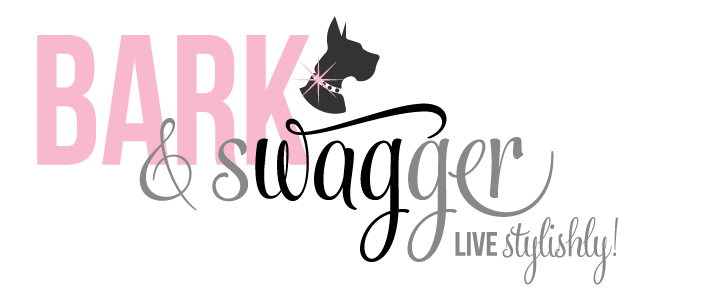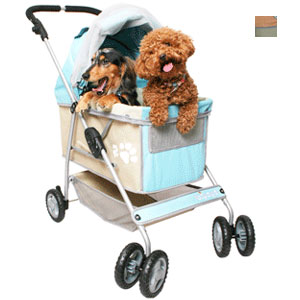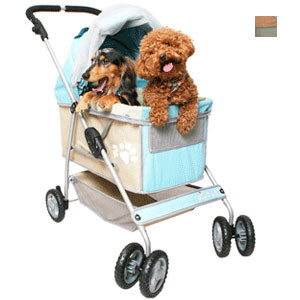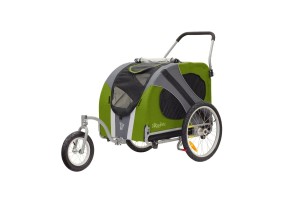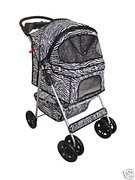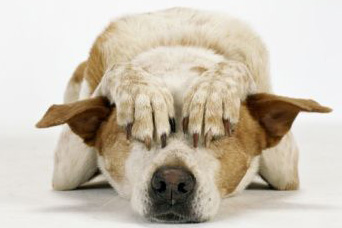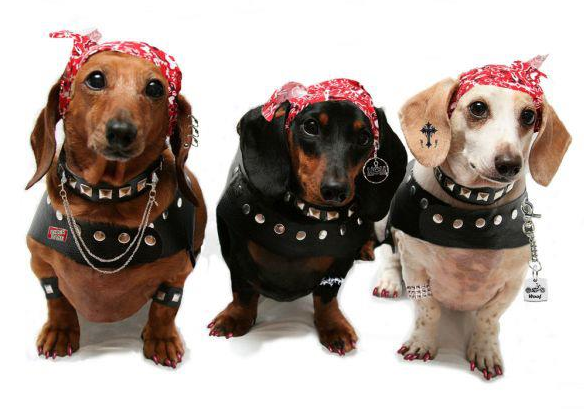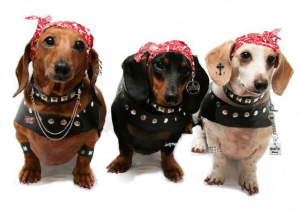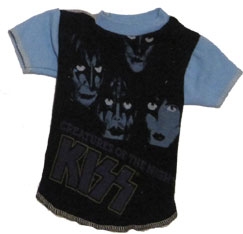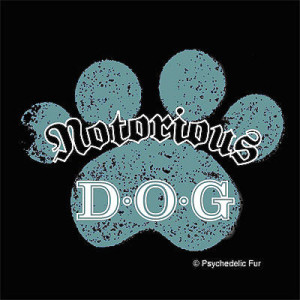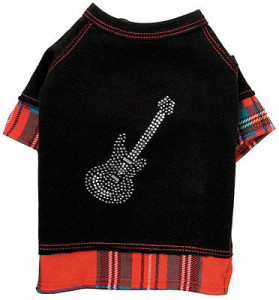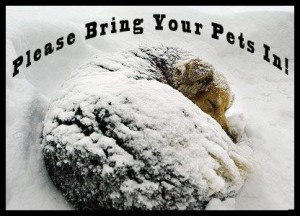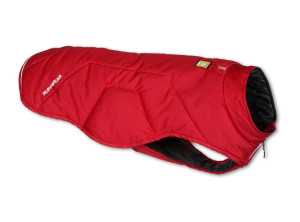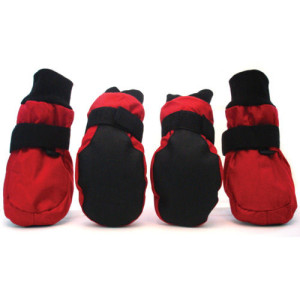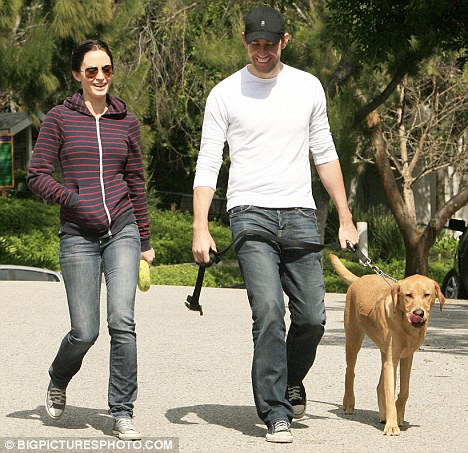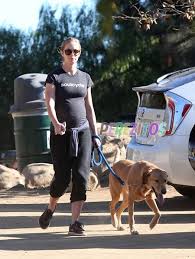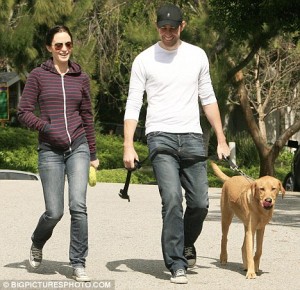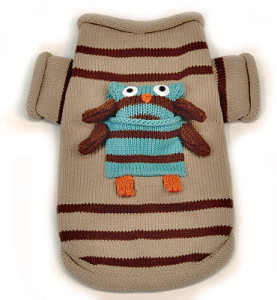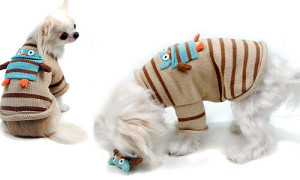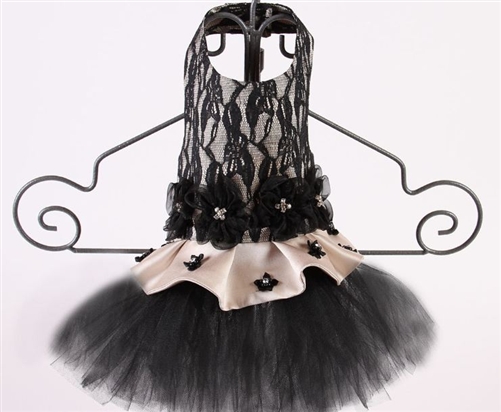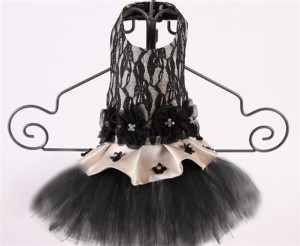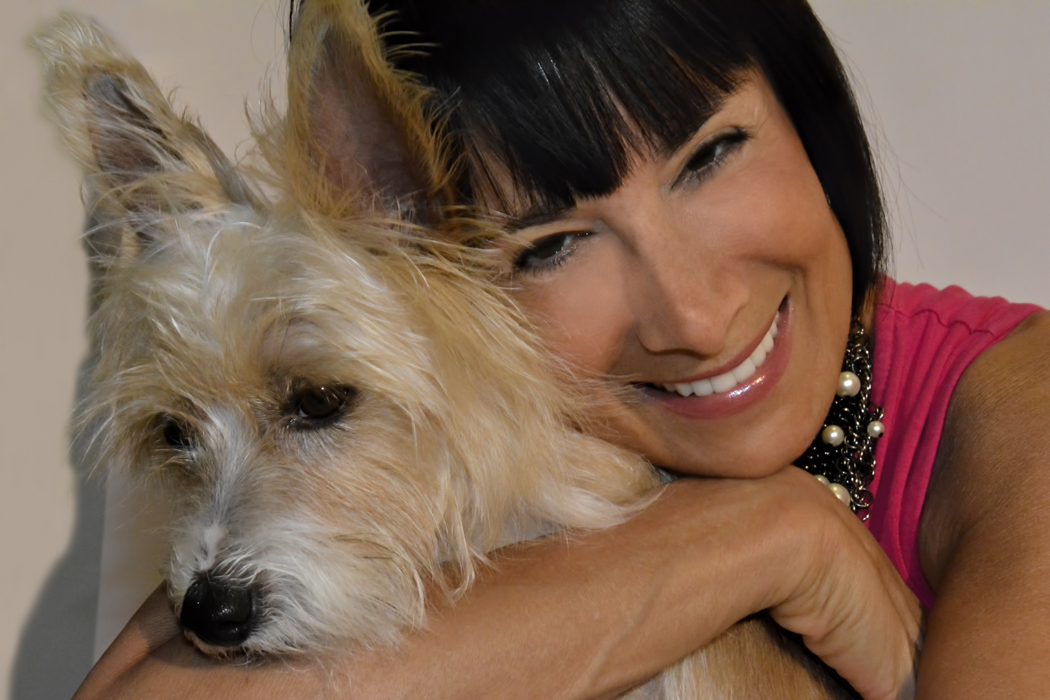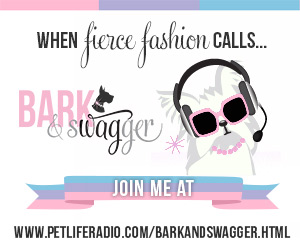
photo courtesy of BestBullySticks
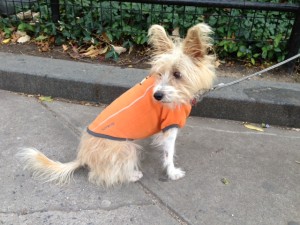
Sophie in her Climate Changer
Sophie and I were out on our morning walk today, she in her cutie green Ruffwear Climate Changer fleece, and me in layers for a semi-cold New York morning. Sophie was doing her normal thing: getting spooked by noises, stopping short so she could take in her surroundings and get comfortable as to what was ahead of her, and doing a lot of shaking off and stretching. It looks really cute when she stretches. It’s kind of like a little bow she’s doing. But in reality, the shaking off and stretching are stress alleviators. Granted, Sophie is an 11 lb, scrawny little pup in a very big New York City, an environment that can be overwhelming to full grown adults! But it got me thinking. My dog is skittish and I feel so badly for her when she’s especially nervous. It can’t be easy being Sophie at those times.
I’m sure I’m not alone. There must be a lot of dog parents who also have skittish pups. So, I decided to do research and see what I could find that might help my Sophie and the other moms and dads who face the same challenges, to make our dogs feel more confident. What I discovered was really interesting. You know, I have a new friend who is a fellow pet blogger. She is constantly writing about how she’s learned so much in the last two years of her blog. I get what she means! In doing the research to bring you the freshest information I can find on each topic, I’m learning and growing too, becoming a better mom to Sophie. It’s really cool!
One of the first things I learned is that some dogs are predisposed to being anxious and jumpy. It’s like it’s in their DNA or something. Maybe that’s Sophie, because she’s been this way since we first brought her home at 12 weeks. Either way, there’s great information out there as to what to do and not do. You might not have thought of them; I know I didn’t think of some. Or, you might not have realized what you’ve been doing could make it worse!
Signs of Anxiety In Dogs
As per veterinarian Dr. Jon’s PetPlace.com, here are some of the most common signs your dog may be anxious:
- Changes in appetite or weight
- Excessive vocalizing
- Changes in elimination habits
- Self-mutilation (Excessive licking or chewing)
- Disobedience
- Aggression
- Health changes
- Lethargy
- Depression
- New destructive behaviors (such as chewing)
- Trembling
- Restlessness
- Excessive panting
- I’m going to add excessive stretching and excessive shaking off to this list.
Possible Causes of Anxiety (as per PetPlace.com)
- Separation from family
- Boredom
- Lack of exercise / play
- Fear (Loud noises, other dogs, certain people or objects, etc.)
- Inadequate nutrition
- Health problems / pain
- Inadequate living quarters
- Changes to daily routine
- Loss or addition of family member or dog
What all of the experts say, is to first have your dog fully checked out by your vet, to rule out any health issues that may be causing his or her anxiety. Once that’s done and it’s determined to be emotionally-based, there are some tools you can use to relieve his stress and, over time and if you’re consistent, develop a more confident dog. I was so excited to learn this!
What We Can Do
– Regular exercise is one of the best stress-busters there is, for people and dogs. And, we have to make it vigorous. As I’ve heard so many times, “A tired dog is a happy dog.” When Sophie was a puppy, we would go to see Phil, the owner of one of the first holistic pet stores in NYC. It’s called Whiskers and Phil is a wise man on many things dog. Over the past 26 years, he’s seen it all and has been helping his customers solve their pet’s problems along the way. Phil told me, “You have to walk your dog 2 hours a day; one hour in the morning and one in the evening. Once they poop and pee, then it’s brisk walking the rest of the time.” He’s religious about it and for a long time, that’s what I did. Even more. I wasn’t working when Sophie was a puppy, and we would take hours long walks all over the city. Sophie was tired and happy, but still skittish. She needed something more (we’ll get to that).
Playing with other dogs who are stable in an enclosed area is also a great way to socialize and exercise at the same time. Interestingly enough, professional trainer, Cheri Lucas, says no to dog parks for skittish dogs. We have no control over the other dogs there, and maybe a bully will overwhelm or traumatize your dog and set the process back to square one. Lucas gives a thumbs up to walks with dogs who are balanced, because it allows your pup to experience the ancient ritual of migrating with other dogs. Sophie likes to do that with her best friend, Holly, the Havanese.

Dogfinder Interactive Game
– Mental stimulation is a great way to challenge our dogs, and making them think takes their mind off of being anxious and, actually, tires them out. Nina Ottosson’s interactive dog games are awesome. Sophie loves them and so looks forward to playing. They are treat-based, of course, and your dog has to figure out under which cup or board piece the treat resides. Sophie’s favorite is the Dogfinder Interactive Game. It has plastic bone shaped cups that fit into grooves on the “board”, two to a section. One bone can come out of the groove easily, the other in the section, can’t, unless it’s moved forward where there’s no lip preventing it from being pulled out. Sophie has to figure out how to get the bone that can come out moved and then to push the other one into the spot where she can knock it out. Endless entertainment! Maybe one of Nina’s games would be good for your dog, too.
– All of the experts say training is key. When we give our dogs things to do and praise/treat them when they do good, it calms them by giving them a directive and focuses their attention on us. Training also speeds the bonding process with your dog, says E.H. Amos, a 27 year dog owner and a 16 year dog rescuer.
– Constantly review the training basics of sit, down, stay. Keeping them focused on you and their mind engaged keeps them calmer. When Sophie is having a moment out on the street, I start doing sit, stays with her, sometimes repeatedly. Sit, stay, walk. Sit, stay, walk. It does work.
– The Pedigree experts recommend creating repeated positive experiences for the dog with many different people. As Dr. Nicholas Dodman of PetPlace.com says, “Pups should learn that strangers are benevolent and often come bearing gifts.” You do this by having different people over. With a skittish dog, Pedigree has recommended a couple of exercises your friends can perform with your dog.
Exercise 1:
Choose friends who have calm energy and clearly love dogs. They should sit with their back toward the dog with an outstretched hand containing treats. When the dog takes the treat, praise him.
Exercise 2:
Another exercise is to, believe it or not, yawn. Yawning is a calming signal for dogs. Have your dog-loving friend hold out a treat for your dog, while not making eye contact with the dog at all. Have the friend start yawning repeatedly and you join in, too. The dog should start calming down pretty quickly. Try not to crack up in laughter at the ridiculous way you guys must look, as that will probably set your training back. 🙂
– When your dog meets a stranger and until she’s completely comfortable with that person, they should ignore your dog and not touch her, says trainer Cheri Lucas. “Tell them she’s in training,” she suggests. “This allows her to relax and not feel pressured to make friends.” If, over time, she becomes curious and sniffs them, that’s great, she says. But still, no petting. It’s a process.
– If your dog is ok with being touched and seems to welcome it, Pedigree experts recommend starting with petting the chin and chest only, at first, and to kneel down instead of bending down, as this is less threatening to a fearful dog. Avoid petting the head and back. I know Sophie doesn’t even like her head stroked by us, so this is, apparently, a very vulnerable place.
– Desensitize your dog to what he’s afraid of. With noises, start off in a quiet place and, if possible, introduce your dog to the noise they don’t like in small doses, increasing the dose over time. If you live in a big city like we do, a quiet place may be on a side street instead of an avenue. You do the best you can and bring plenty of treats so that when he’s being brave, you can reward him big time.
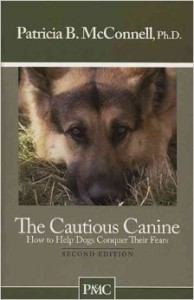 Same thing with dogs that are afraid of other dogs. The experts says small interactions, starting from a few feet away with dogs that are calm and balanced, can be great. Over time, close the gap more and more.
Same thing with dogs that are afraid of other dogs. The experts says small interactions, starting from a few feet away with dogs that are calm and balanced, can be great. Over time, close the gap more and more.
Here’s a book recommended by Fearfuldogs.com (another great resource) that looks very helpful. It’s called The Cautious Canine by Patricia B. McConnell, and provides a step-by-step training program of desensitization and counter classical conditioning. It is on the top ten of Dogwise’s Dog Training Book Catalog and has helped thousands of dogs and their owners around the country, it says. And it has positive reviews.
Sometimes We May Have to Resort To A Behaviorist or To Medication
If training, patience and time don’t make your dog more comfortable in his own skin and you can see that it’s getting in the way of him leading a happy life, sometimes an animal behaviorist can really help. We went to see one for Isabel, one of our cats. She is very timid and was having some issues with going outside her litter box. This doctor really helped us.
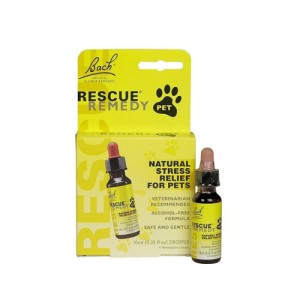 Sometimes a behaviorist, who should be a trained MD in this field, will prescribe medication to see if that calms the dog down. As I’m not experienced in this area, and I’m definitely not a vet, if you feel this is something to explore, your vet will probably have some suggestions for you. You could also ask about natural calming remedies for dogs. Rescue Remedy works for some people. It didn’t work especially well for Sophie but others have told me they’ve had a great experience with it. I am testing out some herbal mists for dogs. I’ll let you know how those work for me.
Sometimes a behaviorist, who should be a trained MD in this field, will prescribe medication to see if that calms the dog down. As I’m not experienced in this area, and I’m definitely not a vet, if you feel this is something to explore, your vet will probably have some suggestions for you. You could also ask about natural calming remedies for dogs. Rescue Remedy works for some people. It didn’t work especially well for Sophie but others have told me they’ve had a great experience with it. I am testing out some herbal mists for dogs. I’ll let you know how those work for me.
What Could We Be Doing Wrong?
From what I’ve learned, these are the big no no’s when you have a skittish dog:
– Don’t praise when she behaves timidly. I know with Soph, I feel so badly that I immediately want to say, “It’s ok, Sophie. Good girl.” But this is just what I shouldn’t be doing! According to trainer Cheri Lucas, this is sending the message that this behavior is good and you end up reinforcing it. Lucas says, don’t nurture when she becomes startled, for example, keep moving forward and be confident and it will eventually rub off on her.
– Praise like crazy when she’s acting brave or confidently. And it could be moment to moment. It is with Sophie, anyway. One minute, I’ll see her jump at a piece of paper blowing or at a noise and I’ll have to consciously tell myself, “Be quiet. Move her on.” And the next, she’ll be trotting along happily, or be curious about another dog and want to run up and say hi. And then, I ‘ll have the treat ready and lots of praise.
– Don’t rush his training. In some dogs, especially ones who’ve had a bad experience when they were puppies, it may take real time to get them through this process of developing confidence. That’s why the experts talk about creating repeated positive experiences for him. He needs to learn, over time, that people are good and noises just come with the territory. The key words are gentle and patience.
In Summary
Having a skittish dog isn’t easy. We love them and, because they’re our kids and they rely on us, we want to protect them. But what I’m learning is, the best way to protect them is to help them build the confidence they need to survive happily in our world. What it takes is regular, vigorous exercise of the body and the mind, and consistent training. Be patient and gentle, and be ready with plenty of love when they get it right. Why don’t we try applying what we’ve learned and reassess in a couple of months? We can compare notes on progress. I’d love to hear your success stories or what you didn’t realize you could do to help your dog. Please reach out and comment below.
And if you like what you’ve read, please share!
Until next time…
(Disclosure: If you choose to purchase any of the suggested items in this post, I will receive a small compensation from the company, which goes towards keeping Bark and Swagger up and running and towards the monthly donations I make to animal rights and rescue organizations. Thank you for helping out!)
